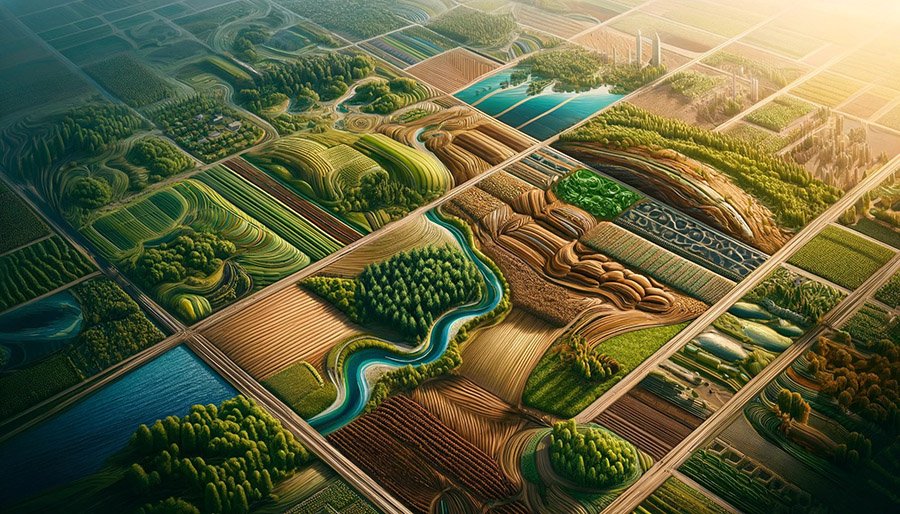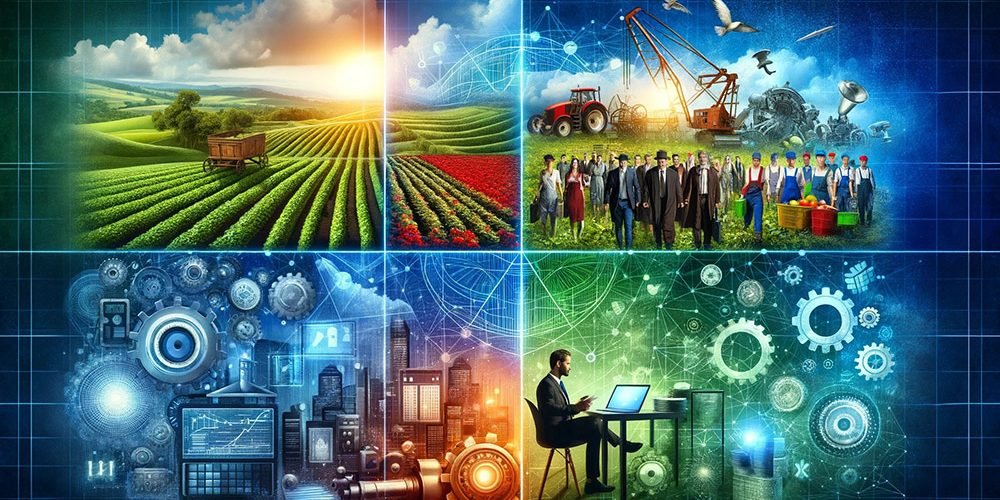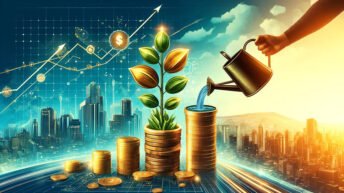In economics, the four factors of production—land, labor, capital, and entrepreneurship—are the core elements that combine to create all goods and services. Each factor contributes uniquely to the production process:
- Land: Refers to all natural resources used to produce goods and services.
- Labor: Involves the human effort, both physical and mental, that goes into the creation of products and services.
- Capital: Consists of the tools, equipment, and facilities used in production, including buildings and machinery.
- Entrepreneurship: The drive to develop an idea into a business, which combines the other three factors to operate a business or enterprise.
Understanding these factors is crucial for grasping the mechanics behind economic activities and business operations. They form the foundation of economic theory and are pivotal in the analysis of the health and growth of economies. Whether a small startup or a multinational corporation, businesses rely on these four factors to produce and deliver products to consumers.
Consider this: a 10% increase in capital investment in an economy can lead to an uptick in GDP growth by approximately 1.5%, showcasing how shifts in just one production factor can significantly impact global economies.
Factor of Production #1: Land

In economic terms, ‘land’ encompasses all natural resources that are available without human intervention. This includes not only the physical ground and fields but also natural resources like minerals, forests, and water.
Land as a factor of production represents the base upon which all physical production builds; without land, there would be no space to set up factories or harvest resources that are critical to manufacturing and agriculture.
Current Examples
Current trends in land use highlight significant shifts towards urbanization and sustainable agriculture. As more people move to urban areas, the demand for residential and commercial buildings increases, impacting the availability of land for other uses.
Concurrently, there is a growing emphasis on sustainable agriculture practices that aim to protect and preserve land quality for future generations, such as crop rotation, organic farming, and the use of technology to enhance yield with minimal environmental impact.
Impact of Technological Advances
Technology is radically transforming how land is used in production. Precision farming, for example, uses GPS and IoT (Internet of Things) sensors to deliver real-time data to farmers about the state of their fields and crops. This technology enables optimal planting, watering, and harvesting to maximize efficiency and yields.
Renewable energy sources like solar and wind power are also changing land use dynamics. These technologies require large areas for installation but offer the promise of clean, unlimited energy, reshaping how land is utilized for energy production and setting the stage for a more sustainable economic future.
Factor of Production #2: Labor

Labor refers to the human input—both physical and mental—that goes into the production of goods and services. This factor of production encompasses the skills, knowledge, and efforts that individuals contribute to their work.
Labor is critical as it directly affects both the quality and quantity of output. Without labor, even the most advanced technologies and abundant natural resources would not be able to produce anything.
Changing Dynamics
The dynamics of labor markets are undergoing significant transformations. The rise of remote work, spurred by advancements in technology and accelerated by global events such as the COVID-19 pandemic, has changed where and how people work.
The gig economy is another major shift, with more people taking on freelance and contract roles rather than traditional full-time employment. Additionally, demographic shifts, such as aging populations in developed countries and younger workforces in developing nations, also profoundly influence labor market structures and policies.
Challenges and Solutions
One of the current challenges in labor markets is labor shortages in certain sectors, such as technology and healthcare, which often stem from a skills mismatch. Educational institutions and businesses are increasingly collaborating to ensure curricula meet the evolving demands of the modern workplace.
Solutions include more targeted vocational training and continuous professional development programs, aimed at equipping workers with relevant skills for today’s and tomorrow’s industries.
Also read: Bargaining Power of Suppliers: Impact and Strategies for Businesses
Factor of Production #3: Capital

Capital in economic terms includes all physical and human resources that are used for the production of goods and services. Physical capital refers to tangible assets like machinery, buildings, and technology that aid in production.
Human capital, on the other hand, represents the skills, knowledge, and experience possessed by an individual or population, viewed in terms of their value to an organization or country.
Investment Trends
Investment trends significantly impact business growth and economic development. There is a growing trend towards investing in sustainable and socially responsible resources, influenced by global awareness of environmental issues and corporate governance.
Another trend is the surge in investments in emerging technologies, which are seen as pivotal for staying competitive in a rapidly changing global market.
Technological Capital
The integration of digital tools and artificial intelligence (AI) into traditional industries is reshaping the concept of capital. These technologies not only enhance production capabilities but also create new avenues for innovation and efficiency.
AI, for instance, is being used to automate routine tasks, analyze data for strategic insights, and drive decision-making processes, thereby increasing productivity and reducing costs. The rise of technological capital demands businesses to not only invest in new technologies but also to continuously update their human capital’s skills to effectively leverage these innovations.
Factor of Production #4: Entrepreneurship

Entrepreneurship is defined as the capacity and willingness to develop, organize, and manage a business venture along with any of its risks in order to make a profit. The most obvious example of entrepreneurship is the starting of new businesses.
In the context of the four factors of production, entrepreneurship is the driving force that brings together land, labor, and capital to create and market new goods and services.
Examples
- Elon Musk and Tesla: Musk’s ventures illustrate how entrepreneurship can harness land (acquisition of manufacturing plants), labor (engineers and factory workers), and capital (investment in technology and infrastructure) to revolutionize industries. Tesla’s success in electric vehicles has pioneered a shift towards sustainable transportation.
- Ritesh Agarwal and OYO Rooms: Starting in India, Agarwal’s vision transformed available property (land) and capital into a new concept in hospitality by organizing labor to enhance service delivery across the global chain of hotels and vacation homes.
Challenges in Modern Economies
Entrepreneurs often face significant barriers including complex regulatory environments and high market entry costs. In many regions, stringent regulations and a lack of transparency can stifle new business development. Additionally, the high cost of acquiring capital and the competitive landscape can deter new entrants.
Also read: Product Mix: Definition, Strategies, and Examples
Interplay and Modern Applications
Synergistic Relationships
The four factors of production interact in a synergistic manner to drive economic growth. Labor works on land with the help of capital, under the direction and innovation of entrepreneurship. The efficiency and productivity of one factor often enhance the effectiveness of the others, creating a cumulative effect on output.
Innovative Uses
- Fintech: Combines capital (investment in technology), labor (software developers), and entrepreneurship (innovative business models) to revolutionize banking and financial services.
- Biotech: Utilizes labor (scientists), capital (state-of-the-art laboratories), and land (biological resources) to pioneer treatments and cures, driven by visionary entrepreneurs.
- Green Energy: Integrates new technologies and renewable resources (land), supported by skilled labor and significant capital investments, to create sustainable energy solutions.
Global Perspective
On a global scale, these factors are increasingly interdependent due to trends like outsourcing and international trade. Companies might use capital from one country to harness labor resources in another, all orchestrated by global entrepreneurs. This interconnectedness can lead to increased efficiency but also raises concerns about resource distribution and economic parity among nations.
Conclusion
This article has delved into the four essential factors of production—land, labor, capital, and entrepreneurship—and their critical roles in economic and business activities. Understanding and managing these factors effectively is fundamental to both national economic success and individual business achievements.
Looking ahead, the integration of technology and sustainable practices is likely to shape how these factors are used. Innovations such as AI and automation in production, sustainable resource management, and global collaborations will redefine traditional models.
Business leaders and entrepreneurs should regularly evaluate how they utilize these four factors in their operations. By optimizing the interplay and maximizing the efficiency of each factor, businesses can achieve greater productivity and sustainability, ensuring long-term success in an evolving economic landscape.








Add comment